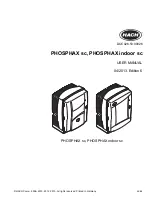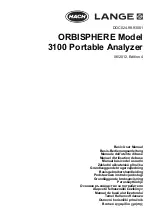
Page 1
47200 Instruction Manual (Rev. 1)
Grip Strength Meter
Cat. 4 7 2 0 0
1
GENERAL
The
47200 Grip Strength Meter
(GSM) measures forelimb grip-strength in rats and
mouse.
The effects of drugs, toxins, muscle relaxants, disease, ageing or neural damage on
muscle strength may be assessed.
The animal is placed over a base plate, in front of a grasping bar (either T-shaped or tra-
peze-shaped), whose height is adjustable. The bar is fitted to a force transducer con-
nected to the
Peak Amplifier
.
When pulled by the tail, the animal grasps to the bar; rodents instinctively grab anything
they can to try to stop this involuntary backward movement, until the pulling force over-
comes their grip strength.
After the animal loses its grip on the grasping bar, a peak preamplifier automatically
stores the peak pull force achieved by the forelimbs and shows it on a liquid crystal dis-
play.
An integrated measurement of the four limbs can also be obtained by using one of the
optional grids available, see paragraph 2.2.1.
1.1
Principle of Operation
The force transducer is mounted in the metal block positioned on the upright fixed to the
base plate.
When pulled by the tail, the animal grasps at the bar. Rodents instinctively grab anything
they can, to try to stop this involuntary backward movement, until the pulling force over-
comes their grip strength.
The completion of each test is indicated by the sudden release of the bar; in alternative,
the operator may choose to press the external foot-operated trigger switch provided.
After the animal loses its grip on the grasping bar, the display shows the results of the
test (i.e. force and time corresponding to the animal response); the operator may decide
to reject the results or to accept them, in which case they are reco
rded in GSM’s internal
memory.
The results of, typically, several hundred of tests may be stored in GSM for transfer to a
PC when convenient.








































